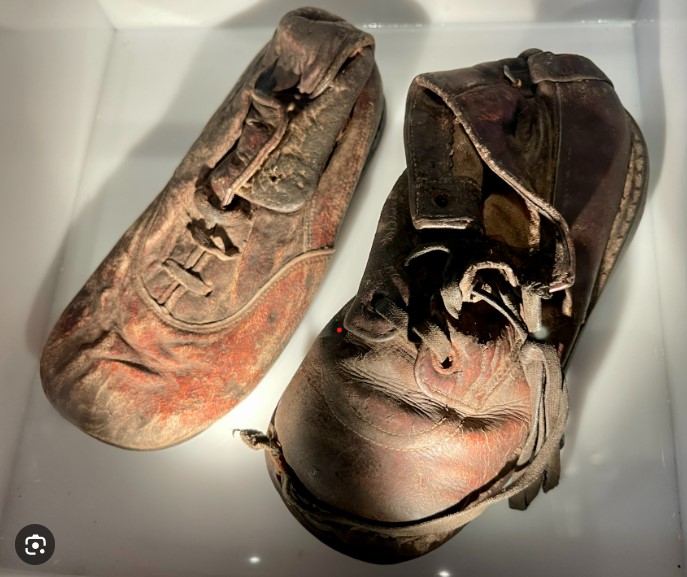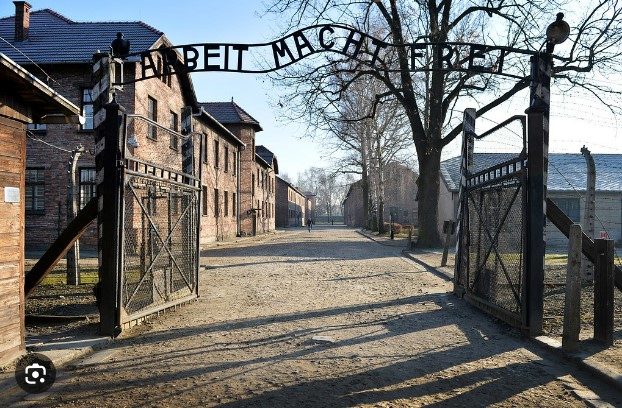A modern conservation laboratory on the grounds of the former Auschwitz concentration camp is carrying out a project that will conserve thousands and thousands of shoes that were worn by children who were murdered by the SS.
The fragile shoes, lovingly rubbed and scraped to free them from the accumulated rust and dirt that decades have left behind, are then scanned and photographed in a neighboring room and catalogued in a database.
The work is part of a two-year effort launched last month to preserve 8,000 children’s shoes at the former concentration and extermination camp where German forces murdered 1.1 million people during World War II.
During the war the site was in a part of Poland occupied by German forces and annexed to the German Reich. Today it is a memorial and museum managed by the Polish state that has taken on the solemn responsibility to preserve the evidence of the site, where Poles, Jews, Romani, gay people, and the disabled were exterminated. It was the Germans’ practice to destroy evidence of the atrocities they committed in the death camps, but at Auschwitz they failed to do so because they fled in great haste in the chaos that ensued as the Soviet forces approached toward the war’s end.

The museum is able to conserve about 100 shoes a week and has processed 400 since the project began last month. The aim is not to restore them to their original state but to render them as close to how they were found at war’s end as possible—an evocation of the tragic victim to whom they belonged. Most of the shoes are single objects. A complete pair with shoelaces is a rare find.
Elżbieta Cajzer, head of the Collections, said conservation work always turns up some individual details of those killed at the camp — suitcases in particular, can offer up clues because they bear names and addresses. She expects that the work on children’s shoes will also reveal some new personal details. Last year, workers conserving adult shoes found an Italian 100 lire banknote in a lady’s high-heeled shoe that was also imprinted with the name Ranzini, a shoe manufacturer in Trieste. The owner was likely Italian, but nothing else is known about her.
More than 100,000 shoes of victims remain, some 80,000 of them in huge heaps on display in a room where visitors file by daily. Many are warped, their original colors fading, shoelaces disintegrated, but they are a tangible reminder of the lives brutally cut short. The tiny shoes and slippers are especially heartbreaking; a poignant reminder of children who were robbed of the opportunity to live their lives.

Before the SS men sent people into the gas chambers, they ordered them to undress and told them they were going into showers to be disinfected.
The heaps of shoes give the visitor an idea of the enormous numbers that were killed. “We are able to imagine how many people came here, hoping that they would be able to put those shoes back on after a shower. They thought they would take their shoes back and keep using them. But they never returned to their owners,” Cajzer said.
In most cases, the shoes and other possessions were collected and the material used to help the Third Reich in its war effort. The 110,000 shoes in the museum’s collection — while massive — most likely came from only the last transports to the camp, Cajzer said.
The project’s cost of 450,000 euros ($492,000) is funded by the Auschwitz-Birkenau Foundation, to which Germany has been a key donor, as well as the International March of the Living, a Holocaust education program.
The conservation effort cannot save the shoes for ever, but the goal is to preserve them for as long as possible as a testament to the tragedy of the Nazi extermination camps.












